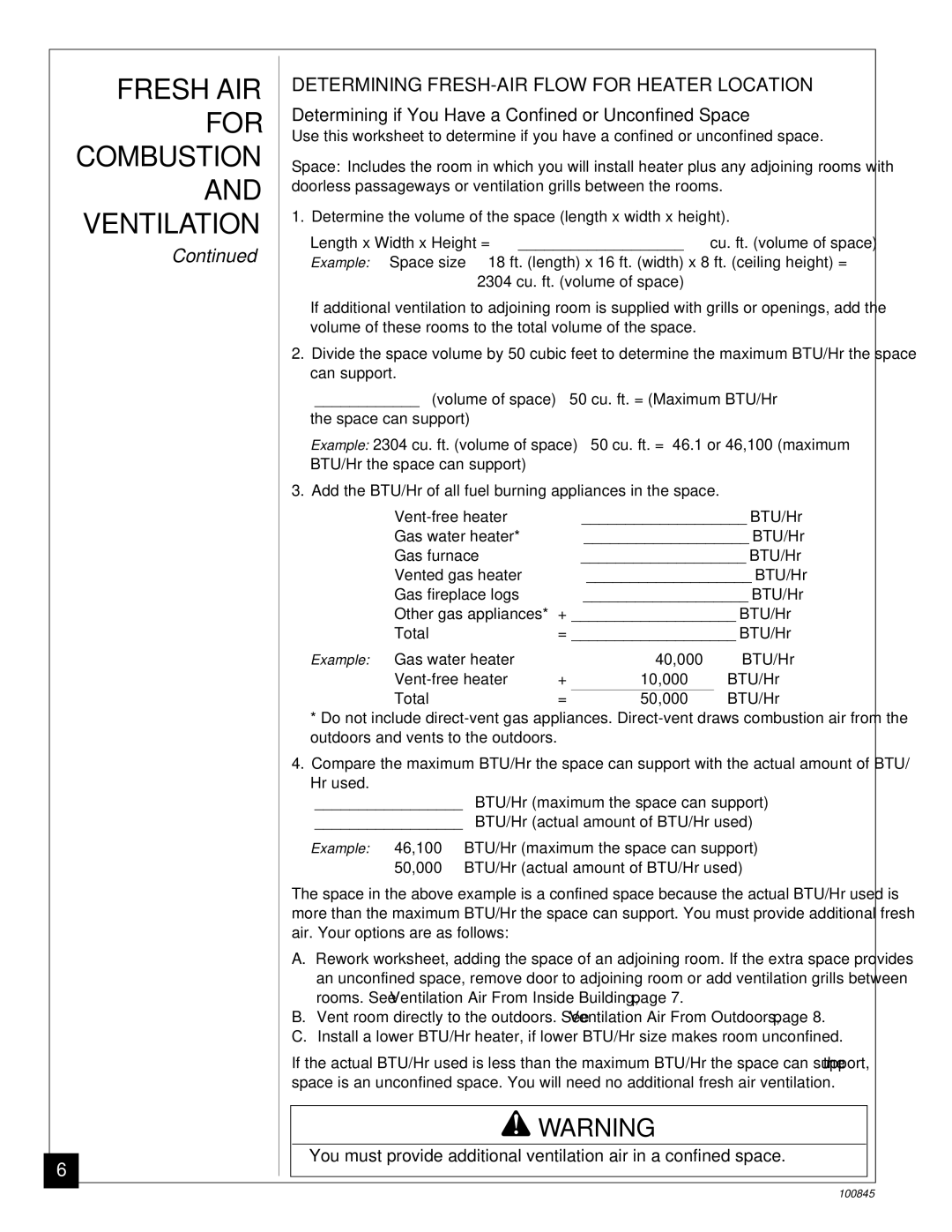VN6B, VN12A specifications
The Vanguard Heating VN6B and VN12A represent cutting-edge solutions in residential heating technology. Designed to meet a variety of heating needs, these systems combine efficiency and user-friendly features, catering to an increasingly eco-conscious market.The VN6B model is ideal for smaller homes or spaces, boasting a compact design without sacrificing power. It uses advanced condensing technology, which allows it to achieve impressive efficiency ratings. With an Annual Fuel Utilization Efficiency (AFUE) of up to 96%, the VN6B maximizes heat output while minimizing fuel consumption. This leads to significant cost savings on heating bills, making it an attractive choice for homeowners looking to upgrade their heating systems.
Meanwhile, the VN12A is built for larger areas, providing robust heating solutions for bigger residential spaces. With similar condensing technology, it features an AFUE rating that matches its smaller counterpart, ensuring that it also operates with remarkable efficiency. The VN12A is engineered with a modulating burner, which adjusts the flame size according to the building’s heating needs. This means it can operate quietly and smoothly, offering comfort without the jarring temperature fluctuations that other systems may create.
Both models incorporate innovative safety features, including a built-in flue gas condensation sensor that ensures safe operation under varied conditions. Additionally, they include a user-friendly digital thermostat, which enables precise temperature control and can be programmed for optimal efficiency. Homeowners can easily customize their heating schedule, making it convenient to maintain a comfortable living environment while also conserving energy.
Another notable characteristic of the Vanguard VN6B and VN12A is their durable construction. Made from high-quality materials, these heating units are designed to withstand wear and tear, ensuring a long lifespan with minimal maintenance. Regular maintenance reminders are a feature, making it straightforward for homeowners to keep track of service needs.
In summary, the Vanguard Heating VN6B and VN12A models stand out in the market for their exceptional efficiency, smart technologies, and user-centric features. They are excellent choices for homeowners seeking reliable and environmentally friendly heating solutions that promise comfort year-round, all while keeping energy costs low.

